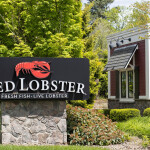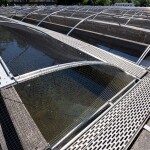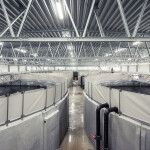Webinars
Access both live and on demand webinars in which industry experts discuss revelvant and impactful topics in seafood.
Live
On Demand
The COVID-19 pandemic has forever changed our shopping habits as businesses and consumers have embraced the evolution of modern grocery shopping. Direct to consumer shipping, in store pickups, meal kit services, and platforms like Instacart are the new normal. As we look ahead to what post-pandemic shopping will look like, some of the top predictions include a continuation of healthy choices, a desire for continued convenience, and ongoing
… Read MoreThe past year has presented unprecedented challenges and opportunities to the seafood industry. The COVID-19 pandemic has brought with it foodservice-sector shutdowns, panicked grocery-buying, e-commerce booms, and several fascinating and unexpected seafood consumer trends. Join FMI—The Food Industry Association Vice President of Fresh Food Rick Stein and Research Director Steve Markenson as they break down the findings of FMI’s
… Read MoreIn March 2020, the Global Dialogue on Seafood Traceability (GDST) released the first-ever global seafood traceability standards just as the world was hit with COVID-19. The pandemic disrupted seafood business in a multitude of ways, driving some businesses to the brink of bankruptcy while others found profitable new opportunities. But across the sector, one thing has become clear: the ability for companies to connect with their supply chains and
… Read MoreSeafood companies, from across the industry are starting to explore how blockchain can help them improve supply chain processes, build trust with consumers, demonstrate sustainability and more. In this webinar meet the conveners and participants of Atea's Norwegian Seafood Trust - a blockchain-enabled network that is bringing together feed producers, aquaculture companies, retailers, and others, to ensure the highest quality of product while
… Read MoreAround the world, critical natural habitats such as forests, grasslands, mangroves, wetlands, and peatlands are converted into cropland, grazing land, or aquaculture ponds for the expansion of food production. This race to clear land for agriculture and aquaculture results in greenhouse gas emissions, habitat and biodiversity loss, disruption of water cycles, and the marginalization of the communities that depend on them. In the seafood sector,
… Read MoreOver the last 60 years, our understanding of how markets adopt innovation has evolved. This work started with Everett Rogers introducing the idea of early adopters and the diffusion of innovation theory and then expanded with Geoffrey Moore’s focus on discontinuous, disruptive innovation. Now this field of research is being adapted and applied to innovation associated with sustainability and large-scale change including implementation of
… Read MoreThis webinar organized by SeafoodSource and Tradewind Finance will discuss the trade finance solutions available to domestic and international seafood buyers and suppliers. Topics will cover the benefits of trade finance, including improved cash flow, greater growth opportunities and credit protection. The webinar will also delve into real examples of seafood businesses who have used trade finance to boost their liquidity, achieve their
… Read MoreOn Tuesday, 5 November, 2020, Joe Biden was elected the 46th president of the United States of America. As he prepares to take office in January 2021, the seafood industry is looking for answers as to what the Biden administration’s approach to governance, conservation, and international relations will look like, especially after the unorthodox approach President Donald Trump took to international trade and the attention he paid to the
… Read MoreWith 2020 coming to a close, the legal and regulatory environment in the United States has continued to advance requirements for corporate due diligence on seafood legality and human rights. The webinar will present a variety of viewpoints from private industry, government, and civil society on the evolving regulatory landscape and what companies can do to take action. The panelists will give an overview of the changing U.S. regulatory
… Read MoreEach year, thousands of fishing vessels transfer fresh catch to refrigerated cargo vessels, or carriers, as a way to improve efficiency. But this practice, a vital part of the global fishing industry and seafood supply chain, is often hard to monitor and regulate at sea. And although the practice is legal throughout much of the ocean, ineffective monitoring and control of transshipment creates opportunities for illegally caught seafood to enter
… Read More




